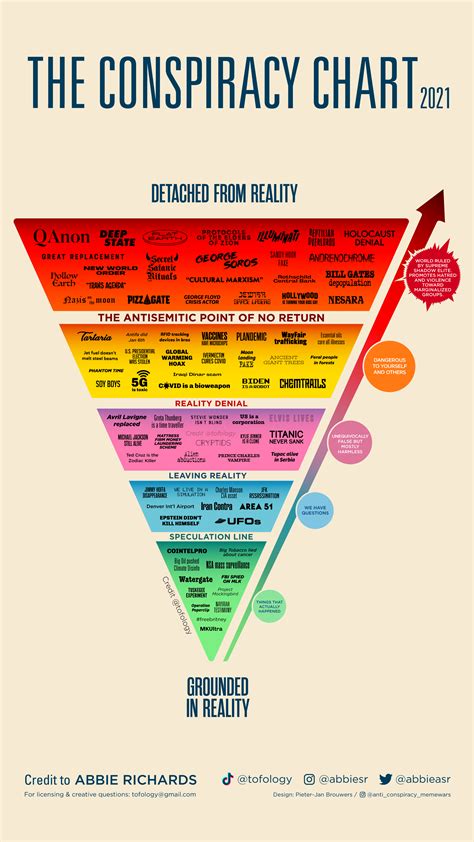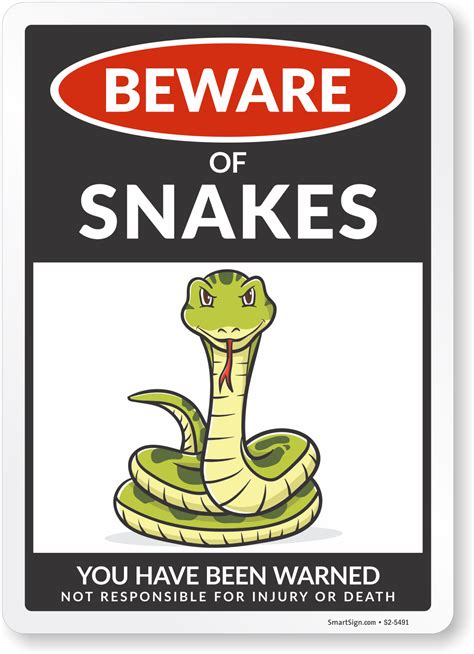
Are certain lighthearted conspiracy theories, often dismissed as mere internet fodder, potentially rooted in truth? A viral online discussion explores a range of these theories, prompting individuals to share their perspectives and purported evidence, leaving readers to decide whether these claims hold merit.
Online forums and social media platforms are rife with conspiracy theories, ranging from the outlandish to the surprisingly plausible. Recently, a wave of discussions has focused on seemingly harmless or humorous theories, questioning their validity and prompting individuals to re-examine long-held assumptions. The renewed interest stems from anecdotal evidence and shared experiences, creating an environment where these theories are gaining traction.
One popular theory revolves around the idea that certain public figures or celebrities are replaced by doubles or clones, often cited to explain perceived changes in behavior or appearance. Users point to inconsistencies in photographs, interviews, and public appearances as evidence. For instance, some speculate about celebrity replacements following periods of significant personal or professional upheaval.
Another recurring theme involves questioning official narratives surrounding historical events. While serious conspiracy theories often involve darker themes, these lighthearted versions focus on the possibility of minor alterations or embellishments to protect reputations or maintain public order. Examples include questioning the true circumstances behind seemingly innocuous incidents and reassessing accepted facts.
The discussion extends to the realm of consumerism and marketing, with theories suggesting that companies intentionally create products with planned obsolescence, forcing consumers to repeatedly purchase replacements. Others speculate about hidden messages or agendas embedded in advertisements and product designs.
The proliferation of these theories reflects a broader trend of questioning authority and established institutions. In an era of information overload, individuals are increasingly skeptical of official narratives and seek alternative explanations, regardless of how outlandish they may seem. The anonymity afforded by online platforms allows individuals to share their thoughts and experiences without fear of judgment, further fueling the spread of these theories.
“It’s fascinating how many people have had similar experiences that seem to support these theories,” one user commented. “Whether they’re true or not, it’s a good reminder to question everything.” This sentiment encapsulates the underlying appeal of these discussions: a desire to challenge the status quo and explore alternative perspectives.
The rise of social media has played a crucial role in the dissemination of these theories. Platforms like Twitter, Reddit, and TikTok allow individuals to easily share information and connect with like-minded individuals, creating echo chambers where these theories are reinforced and amplified. The algorithms that govern these platforms often prioritize engagement over accuracy, further contributing to the spread of misinformation.
While these theories may seem harmless on the surface, they can have real-world consequences. The erosion of trust in institutions and the spread of misinformation can undermine public health efforts, influence political outcomes, and exacerbate social divisions. It is crucial to approach these theories with a critical eye, evaluating the evidence and considering alternative explanations before accepting them as fact.
The internet has democratized information, allowing individuals to access a wealth of knowledge and perspectives. However, it has also created an environment where misinformation can thrive. It is essential to be discerning consumers of information, verifying sources and consulting with experts before drawing conclusions.
Ultimately, the question of whether these harmless conspiracy theories are true remains open to debate. The appeal of these theories lies in their ability to challenge conventional wisdom and offer alternative explanations for the mysteries of life. Whether they are based on fact or fiction, they serve as a reminder to question everything and think critically about the world around us.
Expanding on specific examples of the conspiracy theories discussed:
-
The “Dead Internet Theory”: This theory suggests that much of the internet is now populated by bots and AI-generated content, rather than actual human users. Proponents point to the increasing sophistication of AI and the difficulty in distinguishing between genuine and artificial online activity. They argue that a significant portion of online interactions, from social media posts to product reviews, are manufactured to manipulate consumer behavior and shape public opinion. While seemingly far-fetched, the theory resonates with those concerned about the increasing prevalence of bots and the erosion of genuine human connection online.
-
The Mandela Effect: This phenomenon refers to a shared false memory among a large group of people. The most famous example involves the misremembering of Nelson Mandela’s death in prison, when in reality he was released and later became President of South Africa. Other examples include misremembering the spelling of brands or the lyrics of popular songs. The Mandela Effect has been attributed to various factors, including false memories, suggestion, and the influence of popular culture. Some even speculate about parallel universes or altered timelines.
-
The “Birds Aren’t Real” Movement: This satirical conspiracy theory claims that birds are actually government-controlled drones used for surveillance. The movement started as a parody of conspiracy theories, but it has gained a significant following, with adherents creating elaborate backstories and organizing protests. While the movement is clearly intended as a joke, it serves as a commentary on the pervasiveness of conspiracy theories and the ease with which misinformation can spread online.
-
The Simulation Hypothesis: This philosophical and scientific hypothesis proposes that reality is not what it seems, but rather a computer simulation. Proponents argue that if advanced civilizations have the technological capability to create realistic simulations, it is likely that we are living in one. The hypothesis has been explored in numerous works of science fiction, and it has gained traction among some scientists and philosophers. Evidence cited in support of the hypothesis includes the quantization of physical properties and the limitations of our understanding of the universe.
-
The Theory of Planned Obsolescence: This theory suggests that manufacturers intentionally design products with a limited lifespan, forcing consumers to repeatedly purchase replacements. Examples often cited include smartphones, appliances, and clothing. Critics argue that planned obsolescence is wasteful and environmentally damaging, as it encourages the consumption of unnecessary goods. Proponents, on the other hand, argue that it stimulates economic growth and innovation.
Deeper Dive into the Psychological Appeal of Conspiracy Theories:
Conspiracy theories often appeal to individuals who feel disenfranchised, alienated, or distrustful of authority. They provide a sense of control and understanding in a complex and uncertain world. By subscribing to a conspiracy theory, individuals can feel like they have access to hidden knowledge that others lack, giving them a sense of superiority and belonging to a select group.
Furthermore, conspiracy theories can provide a sense of community and connection. Online forums and social media groups dedicated to specific conspiracy theories allow individuals to connect with like-minded people, share their beliefs, and reinforce their convictions. This sense of community can be particularly appealing to individuals who feel isolated or marginalized.
The human brain is wired to seek patterns and explanations, even when none exist. Conspiracy theories often exploit this tendency, presenting seemingly unconnected events as part of a larger, coordinated plot. This can be particularly appealing to individuals who are struggling to make sense of the world around them.
However, it is important to note that not everyone who subscribes to conspiracy theories is necessarily mentally unstable or irrational. Many individuals are simply curious and open-minded, and they enjoy exploring alternative perspectives. It is crucial to approach these individuals with empathy and understanding, rather than dismissing them as crazy or ignorant.
The Role of Media Literacy in Combating Misinformation:
In an era of information overload, media literacy is more important than ever. Media literacy involves the ability to critically evaluate information, identify biases, and distinguish between reliable and unreliable sources. By developing strong media literacy skills, individuals can become more discerning consumers of information and less susceptible to misinformation.
Media literacy education should begin at an early age, teaching children how to evaluate the credibility of websites, identify fake news, and recognize manipulative advertising techniques. It should also emphasize the importance of consulting multiple sources and considering alternative perspectives.
In addition to formal education, media literacy can also be promoted through public awareness campaigns and community outreach programs. These initiatives can help individuals develop the skills and knowledge they need to navigate the complex information landscape and make informed decisions.
Examining the Potential Harms of Believing in Conspiracy Theories:
While some conspiracy theories may seem harmless, they can have real-world consequences. Believing in conspiracy theories can lead to distrust in institutions, social isolation, and even violence.
Distrust in institutions can undermine public health efforts, influence political outcomes, and exacerbate social divisions. For example, individuals who believe that vaccines are harmful may refuse to vaccinate themselves or their children, putting themselves and others at risk. Similarly, individuals who believe that elections are rigged may refuse to participate in the democratic process.
Social isolation can result from the alienation caused by strongly held conspiracy beliefs. Close friends and family could be at odds regarding viewpoints which can strain and ultimately ruin personal relationships, which increases levels of loneliness, stress, and depression.
In extreme cases, conspiracy theories can inspire violence. Individuals who believe that they are fighting against a corrupt or evil force may be motivated to commit acts of violence in the name of their beliefs. The January 6th attack on the U.S. Capitol is a stark example of how conspiracy theories can lead to real-world violence.
It is crucial to recognize the potential harms of believing in conspiracy theories and to take steps to protect ourselves and others from their negative consequences. This includes developing strong media literacy skills, promoting critical thinking, and engaging in respectful dialogue with those who hold different beliefs.
Addressing the Ethical Considerations of Spreading Conspiracy Theories:
Spreading conspiracy theories can have ethical implications, particularly when they are based on misinformation or disinformation. Individuals who spread conspiracy theories may be knowingly or unknowingly contributing to the spread of false information, which can have harmful consequences for individuals and society as a whole.
Furthermore, spreading conspiracy theories can violate the privacy and reputation of individuals who are targeted by these theories. Accusations of wrongdoing, even when unsubstantiated, can have a devastating impact on an individual’s life.
It is important to consider the ethical implications of spreading conspiracy theories before sharing them with others. This includes verifying the accuracy of the information, considering the potential harm it could cause, and respecting the privacy and reputation of others.
Frequently Asked Questions (FAQ):
Q1: What are some common characteristics of “harmless” conspiracy theories?
A1: “Harmless” conspiracy theories typically focus on less serious topics, often involving pop culture, consumerism, or minor historical events. They tend to be more playful and less overtly malicious than conspiracy theories centered on politics, health, or global events. These theories often serve as a form of entertainment or a way to question everyday occurrences, rather than inciting fear or distrust. Examples include theories about hidden messages in Disney movies, the true purpose of certain public landmarks, or the existence of secret societies within corporations. As the original article points out, these can involve celebrities being replaced by doubles.
Q2: How has the internet contributed to the spread of these theories?
A2: The internet has drastically amplified the spread of conspiracy theories by providing a platform for anyone to share information, regardless of its accuracy. Social media platforms, online forums, and video-sharing websites allow individuals to connect with like-minded people and create echo chambers where these theories are reinforced and amplified. The algorithms that govern these platforms often prioritize engagement over accuracy, further contributing to the spread of misinformation. Furthermore, the anonymity afforded by the internet allows individuals to share their thoughts and experiences without fear of judgment, which further fuels the spread of these theories.
Q3: What are some potential negative consequences of believing in even “harmless” conspiracy theories?
A3: While seemingly innocuous, belief in “harmless” conspiracy theories can have several negative consequences. It can lead to a general distrust of institutions and experts, making individuals more susceptible to believing in more harmful conspiracy theories. It can also foster a sense of alienation and isolation from mainstream society. In some cases, even seemingly harmless theories can contribute to the spread of misinformation and the erosion of critical thinking skills. For instance, believing in a conspiracy theory about a product or service can lead to boycotts and negative publicity, even if the theory is unfounded.
Q4: What are some ways to critically evaluate conspiracy theories and avoid falling victim to misinformation?
A4: Critically evaluating conspiracy theories requires a healthy dose of skepticism and a willingness to question information, regardless of its source. It’s essential to verify the accuracy of information by consulting multiple reliable sources, checking the credentials of the individuals making the claims, and looking for evidence of bias or hidden agendas. Be wary of information that is based on anecdotal evidence, speculation, or emotional appeals. Develop strong media literacy skills, which include the ability to identify fake news, recognize manipulative advertising techniques, and evaluate the credibility of websites.
Q5: What is the psychological appeal of believing in conspiracy theories, even when they seem outlandish?
A5: Conspiracy theories can offer a sense of control and understanding in a complex and uncertain world. By subscribing to a conspiracy theory, individuals can feel like they have access to hidden knowledge that others lack, giving them a sense of superiority and belonging to a select group. They can also provide a sense of community and connection, as individuals connect with like-minded people online and share their beliefs. The human brain is wired to seek patterns and explanations, even when none exist, and conspiracy theories often exploit this tendency, presenting seemingly unconnected events as part of a larger, coordinated plot. Ultimately, these theories can be comforting, even if irrational, and offer a simplified version of events.









